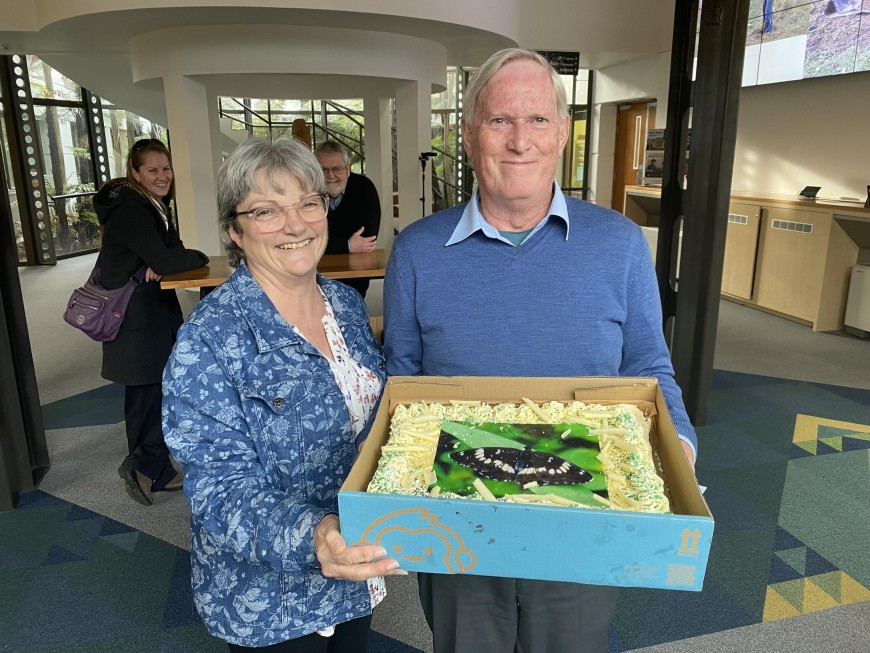Farewell to Hugh Gourlay

Image: Hugh in his younger years, rimming gorse.
Hugh's career began at the Ministry of Agriculture and Fisheries back in 1975. He moved to Levin the following year and worked at the Levin Horticultural Research Centre, before relocating to Canterbury for roles at Lincoln University and the University of Canterbury's School of Forestry. He joined the Entomology Division of DSIR in 1982, which morphed into Landcare Research in 1992.
Among his achievements at MWLR, the successful biocontrol of broom (Cytisus scoparius), ragwort (Jacobaea vulgaris), Californian thistle (Cirsium arvense), and scotch thistle (Cirsium vulgare) stand out. “These were all projects that I was involved in successfully seeking funding for and managed to achieve some level of control in New Zealand using insects that I imported and released as biocontrol agents,” said Hugh.
Other notable highlights include his role as the Containment Facility Manager for 38 years (which involved writing the operating manual for the facility), being a keynote speaker at the International Plant Propagators conference in Tasmania, a speaking engagement with the local branch of the Royal Society, as well as being instrumental in developing the application forms and processes for the release of new biocontrol agents.
“Hugh was a great advocate for weed biocontrol, assisting many people who wanted to get involved, or needed advice and information, from farmers to biosecurity officers as well as many students,” said Lynley Hayes, who worked with Hugh for more than 30 years. “He was also not afraid to take on field work in some quite tricky countries, always coming back with interesting stories to tell and many different insects to study for their potential to control weeds such as banana passionfruit (Passiflora spp.), Japanese honeysuckle (Lonicera japonica), moth plant (Araujia hortoum), and woolly nightshade (Solanum mauritianum). We thank Hugh for his many years of service.”

Image: Hugh at his farewell, with his wife, Robyn.

